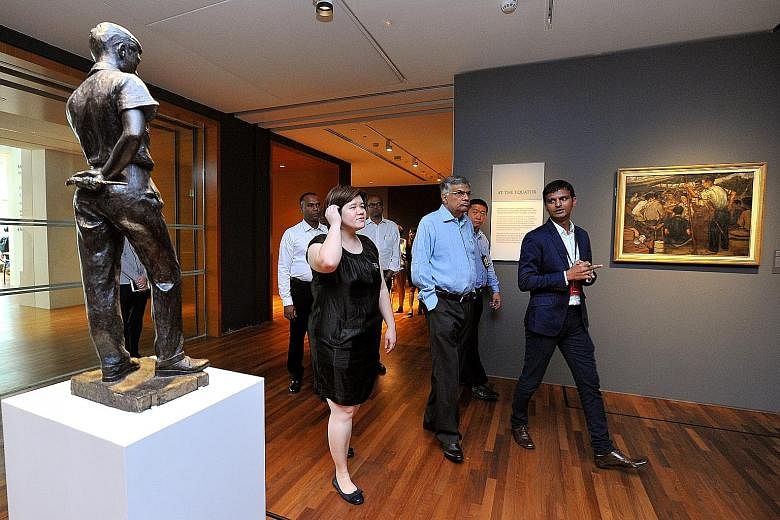Conservation of old buildings and urban redevelopment were on top of the mind of Sri Lankan Prime Minister Ranil Wickremesinghe yesterday, when he visited the National Gallery and took a boat ride on the Singapore River.
He was keen to find out how old courtrooms and office spaces were converted into galleries to house world-class art, and how the heavily-polluted river was transformed and its surroundings redeveloped.
The National Gallery said it was its first time hosting a foreign leader with such a sharp focus on heritage and conservation.
Curators Lim Shujuan and Shabbir Hussain Mustafa were his guides.
Ms Lim, in relating the building's history, explained how a carpark was converted to link the former City Hall with the Supreme Court.
The visitors also toured the cells that used to hold suspects waiting for their court hearing and the City Hall Chamber where the first Cabinet was sworn in. Both were kept in their original state.
Mr Wickremesinghe told The Straits Times after the gallery tour that it "gave us ideas on how our (art) galleries should be built".
Sri Lanka, like Singapore, was colonised by the British and has buildings with colonial architecture.
During his boat ride on the Singapore River, he heard how the water was filthy in the 1970s. After a major clean-up, it is now linked to Marina Barrage and contributes to Singapore's drinking water supply.
"I've been impressed by the development of Singapore in the last 20 years," he said.
It is the reason, he added, his country invited Surbana Jurong, a Singapore urban planning consultancy, to co-plan Trincomalee in eastern Sri Lanka, where a third seaport will be built, as well as the country's Western Province, in which lies the capital Colombo.
Earlier, IE Singapore signed a Memorandum of Understanding with Sri Lanka's Ministry of Megapolis and Western Development to work on business partnerships in the Western Region Megapolis.
The signing was witnessed by Prime Minister Lee Hsien Loong and Mr Wickremesinghe.
Accompanying the Sri Lankan leader on the river tour was the executive director of the Centre for Liveable Cities, Mr Khoo Teng Chye.
Mr Loh Ah Tuan, formerly with the National Environment Agency who, in his younger days helped clean up the river, said thousands of squatters and hawkers were relocated, and debris and rubbish dredged from the banks and river bed.
Mr Michael Koh, former director of urban planning and design at the Urban Redevelopment Authority, recounted the riverbank's redevelopment, which included keeping the low-rise shophouses.
Said Mr Khoo: "The idea was to conserve as much of the old architecture and buildings and blend them with the new."
Sri Lanka wants to rejuvenate Beira Lake in the heart of Colombo. "We are visiting some iconic sites to see how we can have similar projects in Colombo," said Mr Wickremesinghe.


